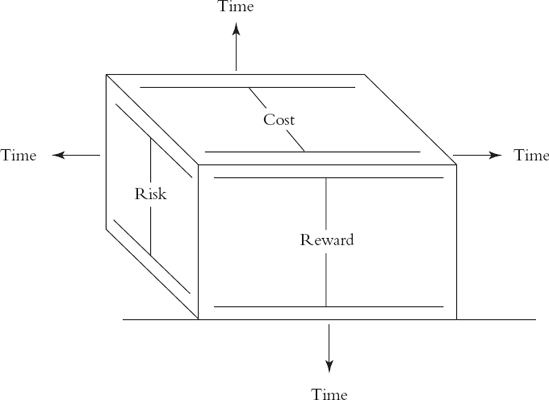Chapter 14. On Time: The Fourth Dimension—Magic or Tyranny?
The language of geometry has proved a particularly fertile source of imagery and metaphor in my efforts to describe the elements of intelligent long-term investing. In the past, I have used the triangle to describe the eternal interplay of reward, risk, and cost in shaping investment returns, but a triangle exists only as a flat, two-dimensional surface. An elongated cube, which has the three spatial dimensions of length, breadth, and depth, is a more useful geometrical figure for those three key elements of investing. It better represents the complicated and simultaneous interplay among the dynamic vectors of return. But, as Albert Einstein pointed out, we live in a universe that is not only spatial, but temporal. He identified time as the fourth dimension, and so it is in the world of investing, too.
In other words, investment return has four dimensions. Three are the spatial dimensions: length (which I'll describe as reward), breadth (risk), and depth (cost). But there is also a temporal dimension: time. Figure 14.1 shows how the four dimensions interact. Never make an investment without having a clear idea of the impact each dimension will have, and never develop a financial program that doesn't meet the same standard.

Figure 14.1. The Four Dimensions of Investing
I'll first review my earlier comments on the dimensions of ...
Get Common Sense on Mutual Funds: Fully Updated 10th Anniversary Edition now with the O’Reilly learning platform.
O’Reilly members experience books, live events, courses curated by job role, and more from O’Reilly and nearly 200 top publishers.

